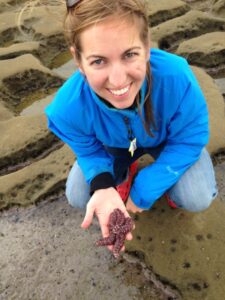 St. Mary’s College of Maryland is part of a collaboration of six institutions that was recently awarded a $3.5 million grant from the National Science Foundation.
St. Mary’s College of Maryland is part of a collaboration of six institutions that was recently awarded a $3.5 million grant from the National Science Foundation.
The project, led by Penn State, focuses on how aquatic plants and animals, such as clams, salt marshes and seagrasses, affect carbon cycling in the Chesapeake Bay.
Estuaries like the Chesapeake Bay play an important role in the global regulation of atmospheric carbon dioxide, the leading greenhouse gas linked to climate change. The goal of the project is to understand the complex pathways that carbon follows as it moves through estuaries.
Assistant Professor of Environmental Studies Cassie Gurbisz, PhD, will be leading the effort to measure carbon cycling in meadows of submerged aquatic vegetation (SAV, also known as bay grasses) with the help of SMCM students from the environmental studies and marine science programs.
“Our findings will help us make better predictions of what happens to carbon as it moves from rivers to the ocean” says Gurbisz. She adds, “This is an important but missing component of global marine carbon budgets.”
Besides SMCM and Penn State, the other institutions participating in the project are the Virginia Institute of Marine Science, University of Maryland Center for Environmental Sciences, the United States Geologic Survey, and Woods Hole Oceanographic Institution.
The collaborative program will incorporate coordinated research activities including field measurements, laboratory experiments and analysis of historical data, as well as outreach to high school and undergraduate students and estuarine managers, all concentrated in the Chesapeake Bay region.
The Office of Research & Sponsored Programs assisted in the development of the grant.


